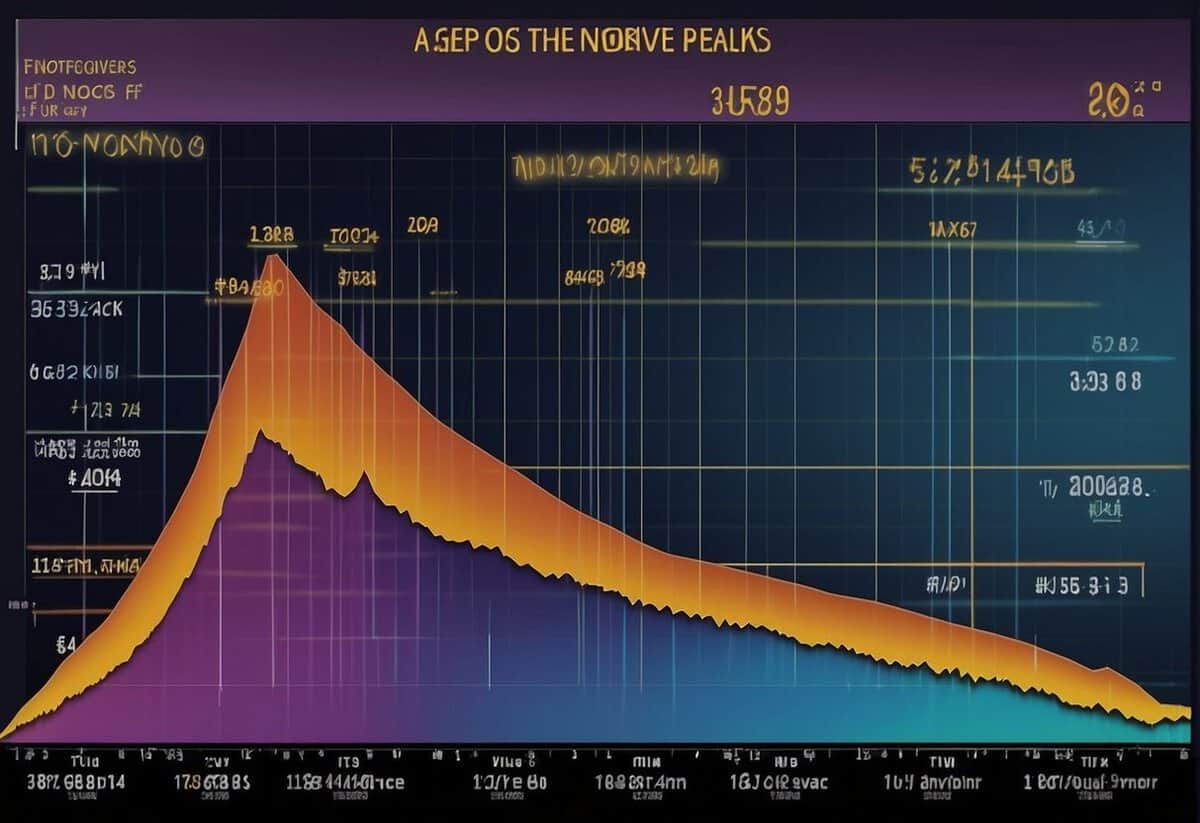At What Year Do Most Couples Divorce? Understanding Marriage Trends
Understanding the dynamics of marriage and divorce is vital as they are significant events in many peoples’ lives. You might have heard about the proverbial “seven-year itch,” but recent statistics paint a different picture of when divorces are most likely to occur. Research has shown a variety of factors, including age at marriage and education level, can influence the longevity of a marriage.

Examining key demographics reveals distinct patterns in divorce trends, such as certain age groups and socioeconomic statuses having different probabilities of marriage dissolution. The reasons for divorce are numerous and complex, with incompatibility, lack of support, and financial issues often cited by those who have gone through a divorce. Addressing these core issues can provide insight into why some marriages last while others come to an end.
Key Takeaways
- Various factors affect marital longevity, with trends indicating specific times when divorces are more common.
- Divorce demographics highlight that age and socioeconomic status play roles in the likelihood of marriage ending.
- Common reasons for divorce include incompatibility, financial strain, and lack of external family support.
Demographics of Divorce

When you explore the landscape of divorce, you’ll notice distinct patterns influenced by factors like age, gender, and geography. These demographics can help you understand the commonalities among those who decide to part ways.
Age Factors in Divorce
First marriages often involve younger couples, and statistics suggest that married individuals between the ages 20 to 25 are 60% likely to get divorced. This percentile diminishes as the age at first marriage rises. The median age at first marriage has been climbing, reaching 30 for men and 28 for women, which some argue lowers the risk of divorce.
Gender Differences and Divorce
Did you know that women initiate almost 69% of all divorces? Gender plays a significant role in who decides to end a marriage. Also, with every subsequent marriage, whether it’s a second marriage or third marriage, the likelihood of divorce increases.
Geographic Variation in Divorce
The divorce rate varies significantly from state to state within the U.S. For instance, Nevada often has some of the highest divorce rates, whereas Massachusetts typically reports lower rates of divorce. Each state’s cultural factors, laws, and economic conditions can influence these statistics.
Socioeconomic Influences and Marital Stability
The stability of your marriage can often be influenced by various socioeconomic factors, such as your income and financial security. Understanding these aspects can give you insight into how economic circumstances might play a role in marital longevity.

Income and Education
Your level of education and income can significantly impact marital stability. Higher education often corresponds with higher earning potential, which can provide more stability in a marriage. Couples with more education tend to marry later, which correlates with a lower risk of divorce. Lower education levels, conversely, often align with lower incomes and can lead to increased financial stress, potentially elevating divorce risk.
Employment and Economic Factors
Stable employment is a cornerstone of financial security within a marriage. Job loss or inconsistent employment can generate substantial financial stress, escalating tensions and possibly leading to separation. Moreover, debt can strain a marriage, regardless of income level, heightening the probability of divorce if not managed properly. Balancing *employment and economic factors*is crucial for marital satisfaction and longevity.
Cultural and Social Trends
Cultural and social trends also influence marital stability. For instance, baby boomers are experiencing what’s known as gray divorce at increasing rates often for financial reasons. These cultural shifts, plus evolving ideas about marriage and economic independence, are reflected in the rising divorce rates among older couples. Secular trends in marriage and divorce are shaped as much by these broad cultural changes as by individual financial circumstances.
Reasons for Divorce

When you hear about a couple divorcing, it’s natural to wonder what went wrong. Each relationship is unique, but common threads are often found when exploring the reasons for a split. Let’s take a closer look at some of the frequent factors contributing to the decision to end a marriage.
Lack of Commitment and Infidelity
A strong commitment to your partner is the backbone of a thriving marriage. When this commitment wavers, it can lead to issues that are difficult to repair. It’s been observed that a lack of commitment is a primary reason marriages falter. Furthermore, when one or both partners are unfaithful, trust is broken. Infidelity disrupts the marital bond and can lead to divorce. Extramarital affairs might not only cause emotional damage but also could complicate divorce settlements and alimony arrangements.
Conflict and Irreconcilability
It’s not uncommon for married couples to have disagreements, but persistent conflict and arguments without resolution can erode the foundation of a marriage over time. Some couples find they’re facing irreconcilable differences where their core values or life goals just don’t align anymore, which could be about anything from child-rearing to financial management. The term “irreconcilable differences” often surfaces during legal proceedings as a cited reason for the breakdown of the marriage.
Life Transitions and Long-Term Marriages
Marriage is a journey that spans decades, and life transitions can put a significant strain on long-term relationships. Couples who have been married for a significant period, commonly 20 or 30 years, might find they’ve grown apart or want different things later in life. Long marriages face what’s sometimes called the “seven-year itch,” where companionship and mutual interests may dwindle, prompting partners to seek fulfillment outside the marriage. Whether adapting to empty nest syndrome or retirement, changes in lifestyle can reveal underlying issues that lead to divorce.
Frequently Asked Questions

When exploring patterns in marital dissolution, you’ll find varied statistics and reasons that contribute to a couple’s decision to part ways. Let’s address some commonly asked questions about this sensitive topic.
What is the typical duration of marriage before a couple divorces?
Most couples tend to experience a divorce around the 7-8 year mark, a period sometimes referred to as the ‘seven-year itch’.
What are the three main causes leading to divorce?
The three most cited causes for divorce include lack of commitment, infidelity, and conflict or arguing.
At what age do individuals most commonly experience divorce?
Individuals most commonly experience divorce in their late 20s to early 30s, with variations depending on individual circumstances and cultural factors.
Can you list some poor reasons that couples might cite for getting divorced?
Some couples might cite reasons such as boredom, peer pressure, or unrealistic expectations as grounds for getting divorced, which could reflect a lack of deep-rooted issues in the marriage.
What are the five most prevalent reasons for marriages ending in divorce?
The top five prevalent reasons for marriages ending in divorce generally include lack of commitment, infidelity, too much conflict and arguing, marrying too young, and financial strain.
Which year of marriage is often found to be the most challenging?
The first year of marriage can be particularly challenging as couples adjust to married life and work through initial differences, but the previously mentioned seven-year itch is also a notable tough period.


